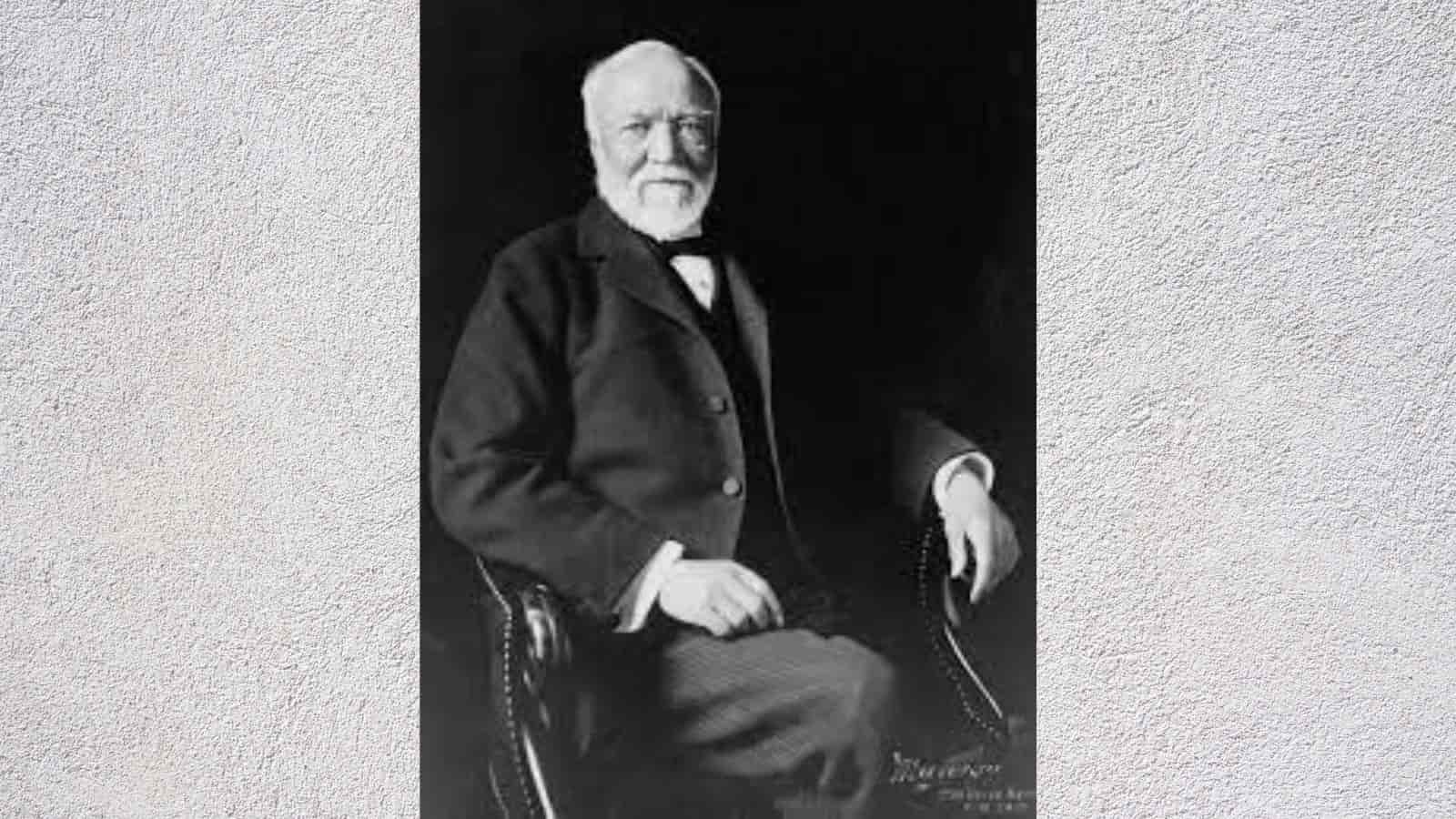Andrew Carnegie Biography: Andrew Carnegie was a philanthropist, industrialist, and entrepreneur of note. Carnegie was born in Fife, Scotland, on November 25, 1835. As a young child, he attended the Free School and developed a passion for reading, history, and philosophy. Due to the impoverished financial situation of his family, his father obtained a loan from Carnegie’s uncle, George Lauder, and subsequently moved the family to Pennsylvania, United States, in 1848. In the same year, Carnegie began working in a textile mill at the age of thirteen. Andrew Carnegie secured a position as a telegraph messenger boy the subsequent year, an opportunity that enabled him to develop beneficial relationships and broaden his professional network.
He commenced employment with the Pennsylvania Railroad Company in 1853 as a telegraph operator and secretary, advancing to the position of superintendent of its Western Division the following year. He made a $500 investment in the Adams Express in 1855. Through diverse railroad investments, he amassed funds for his subsequent ventures. During the Civil War, he participated in the Columbia Oil Company’s profitable ventures. Carnegie shifted his attention from railroads to ironworks and steel production following the conflict. He founded the Keystone Bridge Company in the year 1865.
The United States surpassed the United Kingdom in steel production by the late 1880s. He founded the Carnegie Steel Company in 1892, an enterprise that would generate the majority of his fortune. Carnegie, upon reaching the age of 65, initiated retirement deliberations nine years later. As a result, he sold the Carnegie Steel Company to J.P. Morgan, a financier and banker; the business later underwent a name change to United States Steel Corporation. He subsequently retired once the sale was finalized.
LiAngelo Ball Biography: Age, Height, Birthday, Career, Family, Personal Life, Net Worth
Andrew Carnegie Birthday
Andrew Carnegie, who was born on November 25, 1835, is, with good cause, one of the most renowned industrialists in the United States. Carnegie endured extreme destitution during his childhood and labored ceaselessly to provide for his family. Over time, he transitioned from textile factory labor to the fields of railroad development and steel production. Carnegie amassed sufficient capital through a succession of astute and lucrative investments in the two sectors to found a number of his own enterprises that played a crucial role in the industrialization of the United States. He was extraordinarily philanthropic and donated nearly all of his immense wealth to causes near and dear to his heart, despite his incomprehensible wealth. In his honor, let us commemorate his birthday today!
Andrew Carnegie Early Life
Carnegie was born in Dunfermline, Scotland to Margaret and William Carnegie on November 25, 1835. His upbringing was remarkably unostentatious. Family members inhabited a two-room cottage. The entire first floor of the cottage was the textile studio of his father, William Carnegie. The family resided exclusively in the upper floor single room. His mother provided financial support for the family through the sale of preserved meats. In 1848, after struggling to make ends meet in Scotland, the family relocated to Allegheny, Pennsylvania in the United States on a loan from Margaret Lauder Sr., brother of Margaret Lauder.
Following his relocation to the United States, Carnegie entered the cotton mill workforce as a bobbin boy. He subsequently began working as a telegraph dispatch boy for the Ohio Telegraph Company in Pittsburgh. At the age of 18, he began working for the Pennsylvania Railroad Company, an organization that would later appoint him as the superintendent of the Western Division. His diligent effort and professionalism quickly garnered recognition, which ultimately propelled him to the position of superintendent. Carnegie later benefited greatly from the connections he forged while working in the railroad industry, as it was during this time that he encountered a large number of future investors and developed into an accomplished manager.
Andrew Carnegie Personal Life
Carnegie wed Louise Whitfield, who was 30 years old at the time, at the age of 51. Ten years after their New York City wedding, the couple welcomed their only child, a daughter named Margaret. Carnegie died of bronchial pneumonia in Massachusetts in 1919.
Andrew Carnegie Net Worth and Height
| Name | Andrew Carnegie |
| Date of Birth | November 25, 1835 |
| Age | 83 (at the time of his death) |
| Zodiac sign | Sagittarius |
| Height | 5’2″ |
| Net Worth | $310 billion |
5 Facts About Andrew Carnegie
His work was at Carnegie Hall.
The entrepreneur constructed the renowned venue bearing his name, which subsequently played host to a number of the most renowned musical artists of all time.
His wealth surpassed that of John D. Rockefeller.
He became the wealthiest individual in America, surpassing business magnate Rockefeller, subsequent to the sale of his company to J.P. Morgan.
He advocated for the Union.
By effectively arranging transportation for the Union throughout the American Civil War, he significantly contributed to the organization’s ultimate triumph over the Southern insurgent Confederacy.
After retiring, he devoted himself to his studies.
Carnegie resumed reading and scholarship following his retirement and published three volumes on travel.
He had friendships with eminent authors.
Carnegie maintained close friendships with American satirical writer Mark Twain and English poet Matthew Arnold, whose poem “Dover Beach” is widely recognized. Arnold’s “The Adventures of Huckleberry Finn” was his most renowned work.




